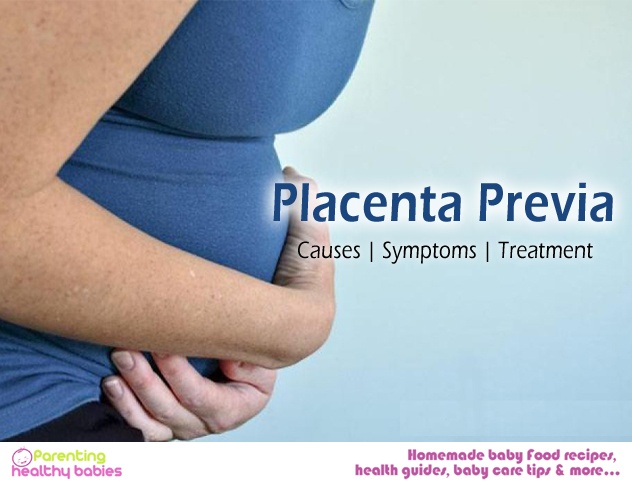Delivering a baby is like walking on path of roses, it seems very beautiful but only you know how much those thorns prick!
During pregnancy a mother goes through an emotional, social as well as physical turmoil. The pain she faces is really beyond imagination. Due to this sometimes new mothers are suggested an option of assisted deliveries, even if normal deliveries are possible. If you are planning to take any such decisions then do take a look at this article and then decide.
Assisted deliveries are performed under certain conditions, when normal delivery is risky to mother or the baby. In these deliveries an aid is used to help the mother to push her baby through birth canal. They are of two types
7 Unknown Complications of Assisted Delivery
1. Forceps delivery
In forceps delivery an instrument which is like a forceps is used. These forceps come in various size and shapes, they are chosen according to need. Baby is pulled from the birth canal with the help of them by an external force.
2. Vacuum assisted delivery
The instrument used here is known as “Ventouse”. It is made up of a manometer, a cup like structure and a pump. The cup is attached to the head of baby by creating vacuum between the baby’s head and the instrument and then baby is guided through the birth canal.
Indications for assisted deliveries are–
1. Maternal exhaustion
If mother is exhausted due to some reason the she is helped with assisted deliveries.
2. Position
The normal position of baby is head down and facing backwards, if the baby is not in normal position, then it has to be rotated and assisted through the birth canal. It is done in assisted deliveries.
3. Maternal health
If mother suffers from any serious health conditions like hypertension, cardiac diseases, spinal cord injuries, cerebrovascular diseases then assisted delivery has to be performed otherwise labour can aggravate her condition.
4. Prolonged labour
Labour is divided into 3 stages. In first stage the cervix starts dilating and preparing for the delivery of baby. Its duration varies between 6 hours to 12 hours. Second stage is the stage where baby starts descending and it varies from 30 minutes to 2hours. Whereas the third stage is the expulsion of placenta which is of 20-30 minutes. If there is prolongation of 2nd stage of labour, baby may face the problem of lack of oxygen. So in this condition assisted delivery is opted.
5. Foetal distress
Doctor normally monitors the foetal heart beats, if he finds anything abnormal, then the baby is said to be in distress. To relieve the stress baby has to be delivered as soon as possible an in such situations, assisted delivery is performed.
6. Post mature baby
Post maturity is the condition in which there is no initiation of labour even after normal 40 weeks of pregnancy.
In all these cases assisted delivery has to be performed, to prevent any harm to mother or baby. But of course there are some risks associated with these techniques. You already may know some of them like superficial scarring to the baby’s scalp, injury to mother, haemorrhage but some of these are rare as well as dangerous. So let us see 7 unknown complication of assisted delivery.
Pelvic organ prolapse of mother
Pelvic region is the region of your waist where your pelvic bone is situated. Pelvic organs in female are- bladder, uterus and ovaries. When these organs descend leaving their normal position, they are said to have be prolapsed. This mainly happen when the muscle supporting these organs become weak or gets damaged and cannot support the organ any more. It is more common in forceps assisted delivery than vacuum assisted delivery. During forceps assisted delivery, forceps is introduced deep in the birth canal. Due to which there is risk of damage to the pelvic muscles. This damage can show right after delivery, or even there can be prolapse after a time period.
2. Stress Urinary incontinence
Urinary incontinence means unable to hold urine. In this condition, it is triggered by stress, hence known as stress urinary incontinence. The act of urination is regulated by sphincter muscle. If the muscle is damaged, loosen or weaken then there is loss of control over the act. During forceps delivery there is excessive tearing of muscles in which sphincter muscle may also get damaged. Even anal sphincter is at the risk of same, though the risk of faecal incontinence is far less than urinary incontinence
3. Anaesthesia complications
During vacuum assisted delivery rarely an epidural anaesthesia is given, mostly analgesic is applied to the vagina. But during forceps delivery, epidural is give. Some of the complications of this anaesthesia are-
a. There may be hypotensione. decrease in blood pressure. This is due to a block in sympathetic path way, which is responsible for regulating blood pressure, along with pain signals.
b. Back pain– At the site of insertion there may be some severe back pain.
c. Headache– If during injecting the anaesthesia, the lower layer i.e. spinal Dura is punctured, there may be severe headache. It mostly subsides later.
d. Injury to nerves, causing convulsions.
4. Subgleal haematoma of the newborn–
Subgleal haematoma is the accumulation of the blood just below the scalp. It is most feared complication of assisted deliveries. It is mainly associated with vacuum assisted delivery and to some extent with forceps delivery also. This may occur due to rupture of some important veins below the scalp. It is mainly associated with misplacement of the vacuum cup on the scalp. Though a very rare condition it is fatal in most of the cases. As the space below the scalp can almost hold 250-260ml of blood, baby suffers from very low level of blood, known as hypovolemia. This may be fatal.
5. Skull fracture
Again a rarely associated condition when done under proper medical attention, but may occur due to misplaced forceps blades, excess force during pulling out, in premature infant as suction of the cup is high. The skull of the baby is not completely fused unlike us. The unfused parts of skulls are held by fontanellae. These are also known as the weak spots of the skull. Thus already the baby is more prone to more damage due to trauma. Skull fracture may cause deformation of the head, injury to brain or underlying blood vessels.
6. Facial nerve damage
Facial nerve runs from the lateral side of our face. It later divides mainly in 5 branches, temporal which serves the forehead, zygomatic- cheek, buccal- buccal area and salivary gland also, zygomatic to the jaw and cervical runs to neck muscles. Thus we can see facial nerve innervates almost the whole face. Sometimes during forceps delivery, if force applied is high then it may result in damage to facial nerve leading to facial nerve palsy. Facial nerve palsy is associated with unilateral facial weakness, drooping of one side of lip, wrinkleless forehead, decrease in taste, hyperacusis (abnormal increase in hearing).
7. Jaundice
Jaundice is yellowing of the skin. We all know that jaundice may occur in newborn, but the risk increases in assisted delivery. Jaundice occurs due to accumulation of bilirubin. Bilirubin is a yellow pigment formed due to breakdown of red blood cells. Normally bilirubin is excreted from the liver. But the liver of a newborn may slightly be underdeveloped. Normally jaundice subsides within 2-3 weeks without any complications. Sometimes phototherapy is required. During photo therapy your baby will be kept under high intensity light. It accelerates the breakdown of bilirubin to a less toxic product. But assisted delivery increases the risks associated with jaundice. As due to assisted deliveries there are injuries to scalp, hematoma and bruising which means more breakdown of red blood cells and ultimately higher amount of bilirubin. Thus the risk of complications due to jaundice also increases, which are deafness, cerebral palsy and kernicterus, which means brain damage due to accumulation of bilirubin in the brain.
As we can see these were some rare but very serious complications of assisted deliveries. Some others like retinopathy which is bleeding at back of eye, cephalohematoma i.e. bleeding just below the skin, chignon which is a swelling at the place of attachment of cup, and superficial injuries are common but they subside within a day or two without any long term effects.
Assisted deliveries have reduced birth mortality and morbidity to a great extent, no doubt in it. But these deliveries have to be done under certain indications. Even doctors try to make the delivery as natural as possible with minimal aid. So yes it is a very painful process, but at the end it is all worth it. At the end we would just like to suggest you to take all the time you need but do not take any decision due to fear or any other influence.
Wish you and your baby a healthy life!













